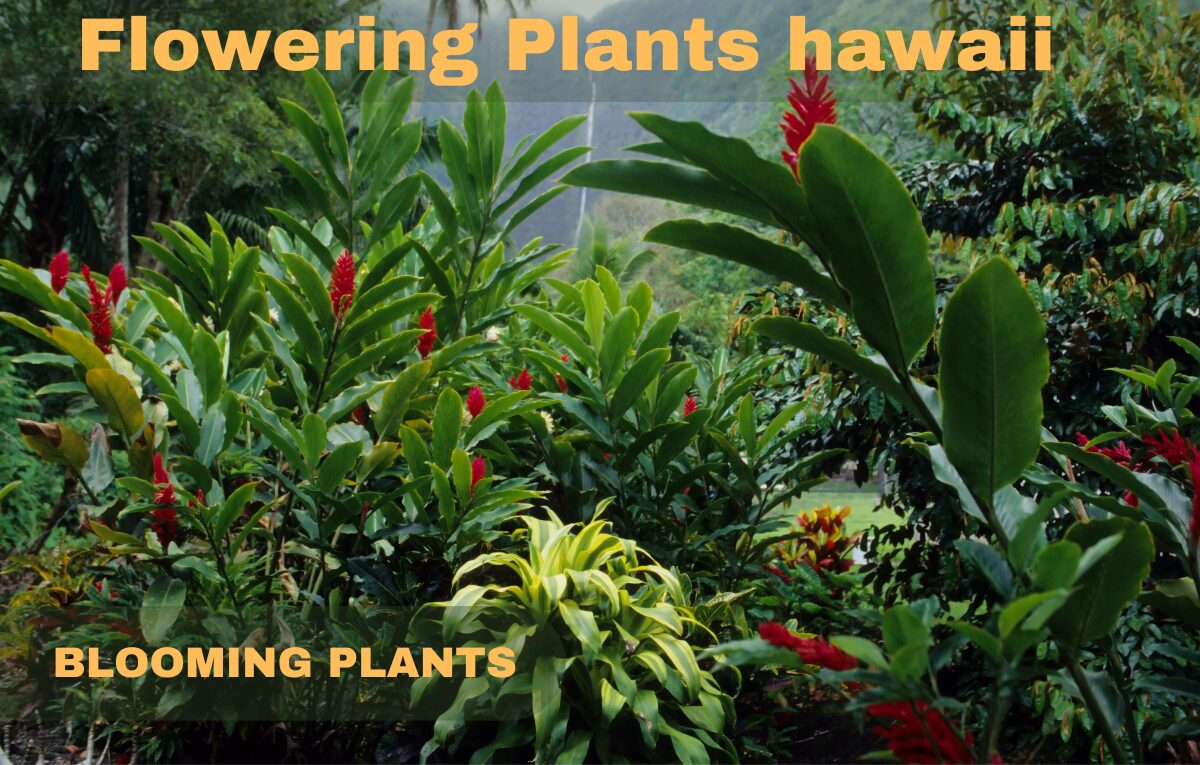an flora today and Hawaii is home to a stunning variety of flowering plants, thanks to its unique climate and fertile volcanic soil. These vibrant plants not only enhance the islands’ natural beauty but also hold cultural and ecological significance. In this guide, we’ll delve into the enchanting world of flowering plants in Hawaii, exploring their types, care, and uses.
Understanding Flowering Plants in Hawaii
What Makes Hawaii Unique for Flowering Plants?
Hawaii’s tropical climate, consistent rainfall, and rich volcanic soil create the perfect environment for flowering plants to thrive. Many species found here are endemic, meaning they exist nowhere else in the world.
Importance of Hawaiian Flowering Plants
- Cultural Significance: Many flowering plants are integral to Hawaiian traditions, such as lei-making.
- Ecological Role: They support pollinators like bees, birds, and butterflies.
- Tourism Appeal: Hawaii’s flora attracts nature lovers and photographers from around the globe.
Popularity of Flowering Plants in Hawaiian Landscapes
From lush gardens to wild rainforests, flowering plants are a vital part of Hawaii’s landscape. Their vibrant colors and fragrant blooms add to the island’s allure.
Best Flowering Plants in Hawaii
Hibiscus (Hibiscus rosa-sinensis)
- Description: Hawaii’s state flower, is known for its large, colorful blooms.
- Care Tips: Prefers full sun and well-drained soil.
- Special Features: Symbol of delicate beauty in Hawaiian culture.
Plumeria (Frangipani)
- Description: Fragrant flowers are often used in leis.
- Care Tips: Thrives in warm, sunny locations with minimal watering.
- Special Features: Comes in a variety of colors, including white, pink, and yellow.
Bird of Paradise (Strelitzia reginae)
- Description: Striking flowers resembling tropical birds.
- Care Tips: Requires bright sunlight and moderate watering.
- Special Features: Adds a dramatic touch to gardens.
How to Grow Flowering Plants in Hawaii
Choosing the Right Location
- Sunlight: Most flowering plants need ample sunlight to bloom.
- Soil: Use well-draining, nutrient-rich soil for healthy growth.
- Space: Ensure adequate spacing to prevent overcrowding.
Planting Techniques for Hawaiian Flowering Plants
- Prepare the Soil: Enrich with organic compost for better fertility.
- Planting Depth: Follow guidelines specific to each plant species.
- Watering: Water deeply but avoid waterlogging.
Maintaining Healthy Plants
- Pruning: Remove dead flowers and leaves to encourage new growth.
- Fertilizing: Use balanced fertilizers to boost blooming.
- Pest Control: Monitor for pests like aphids and treat them promptly.
Creative Uses for Flowering Plants in Hawaii
Landscaping with Hawaiian Flowering Plants
- Garden Borders: Use vibrant plants like hibiscus for colorful edges.
- Hedges: Plumeria and bougainvillea make excellent privacy screens.
- Ground Covers: Opt for low-growing flowering plants like lantana.
Cultural and Traditional Uses
- Lei-Making: Flowers like plumeria and orchids are woven into leis.
- Ceremonial Decor: Used in Hawaiian weddings and celebrations.
- Medicinal Uses: Some plants, like noni, have traditional healing properties.
Eco-Friendly Applications
- Pollinator Gardens: Attract bees, butterflies, and birds with native blooms.
- Erosion Control: Use ground-covering plants to stabilize soil.
- Air Quality Improvement: Flowering plants help purify the air.
Common Challenges and Solutions
Overwatering
- Cause: Excessive watering leads to root rot.
- Solution: Water only when the topsoil feels dry.
Pest Infestations
- Cause: Common pests include aphids and spider mites.
- Solution: Use natural remedies like neem oil or insecticidal soap.
Limited Blooming
- Cause: Insufficient sunlight or nutrients.
- Solution: Relocate plants to sunnier spots and fertilize regularly.
Benefits of Flowering Plants in Hawaii
Environmental Advantages
- Biodiversity Support: Provides habitat for native wildlife.
- Erosion Prevention: Stabilizes soil on slopes and coastal areas.
- Carbon Sequestration: Helps reduce carbon footprint.
Cultural and Aesthetic Value
- Symbolism: Many plants hold deep cultural meanings in Hawaiian traditions.
- Visual Appeal: Brightens landscapes and enhances property value.
- Fragrance: Adds a pleasant aroma to outdoor and indoor spaces.
Economic Contributions
- Tourism: Draws visitors to botanical gardens and nature trails.
- Horticulture: Supports local businesses and nurseries.
- Exports: Hawaiian flowers are popular worldwide.
Conclusion
Flowering plants in Hawaii are a testament to the islands’ natural beauty and cultural heritage. Whether you’re a resident or a visitor, these plants offer endless opportunities to connect with nature. From lush hibiscus blooms to fragrant plumeria leis, Hawaii’s flowering plants are truly a gift of paradise. Start exploring the wonders of Hawaii and bring a piece of the islands into your life.

